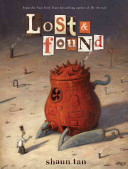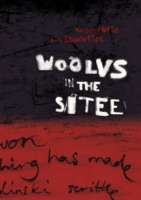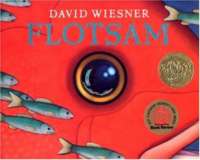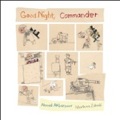by Janelle Mathis, University of North Texas, Denton, TX
 Picture books have been defined over the past few decades with great integrity and attention to the complex interaction that occurs for the reader through the visual aspects of such books—text, illustrations, total design; a commercial product; a social, cultural, historical document (Bader, 1976). Still, when secondary teachers are approached about using picture books in the classroom, many somewhat shun the idea or act surprised that anyone could think this a valid curricular resource for older students. A small number attest to the fact that picture books hold significant experiences for older readers and these teachers can share numerous reasons why picture books play an important role in their instruction. Because the rationale for using contemporary picture books covers many areas of instruction, this week’s blog calls attention to three general categories that harbor many specific reasons why picture books have a place in secondary classrooms. In using these groupings, the discussion also includes the types of transactions with picture books that might be of significance for older readers. The particular categories were chosen to hopefully draw attention to the possibilities of such transactions rather than using picture books solely as models of writing.
Picture books have been defined over the past few decades with great integrity and attention to the complex interaction that occurs for the reader through the visual aspects of such books—text, illustrations, total design; a commercial product; a social, cultural, historical document (Bader, 1976). Still, when secondary teachers are approached about using picture books in the classroom, many somewhat shun the idea or act surprised that anyone could think this a valid curricular resource for older students. A small number attest to the fact that picture books hold significant experiences for older readers and these teachers can share numerous reasons why picture books play an important role in their instruction. Because the rationale for using contemporary picture books covers many areas of instruction, this week’s blog calls attention to three general categories that harbor many specific reasons why picture books have a place in secondary classrooms. In using these groupings, the discussion also includes the types of transactions with picture books that might be of significance for older readers. The particular categories were chosen to hopefully draw attention to the possibilities of such transactions rather than using picture books solely as models of writing.
Personal Connections and Insights
 As adults we continuously remark about how much we learn from a picture book about topics and events that authors and illustrators have shared through a focused story or description. These same comments emerge from those in secondary education as well as their teachers as they experience books that remain in their memory. 14 Cows for America (Deedy, 2009) is one such book as it tells of the gift of a Maasai tribe following the events of 9-11. Both simple text and rich art provide an experience that leaves the listener/reader with the question, “Why didn’t I know about this?” Readers usually want to follow-up on the state of the herd that remains in Africa. Such personal experiences with books help those preparing to teach to realize how powerful picture books can be and that secondary students will not declare such experiences as “elementary.”
As adults we continuously remark about how much we learn from a picture book about topics and events that authors and illustrators have shared through a focused story or description. These same comments emerge from those in secondary education as well as their teachers as they experience books that remain in their memory. 14 Cows for America (Deedy, 2009) is one such book as it tells of the gift of a Maasai tribe following the events of 9-11. Both simple text and rich art provide an experience that leaves the listener/reader with the question, “Why didn’t I know about this?” Readers usually want to follow-up on the state of the herd that remains in Africa. Such personal experiences with books help those preparing to teach to realize how powerful picture books can be and that secondary students will not declare such experiences as “elementary.”
Personal connections with such books as The Red Tree (2003) or I Am Thomas (2011) can relate the search for identity that secondary readers are often experiencing. Simply told, each relates through text and art the stories in which characters and readers consider how they can help shape who they are. Other books that elicit personal response and discussion around issues that can be personal and social in nature are The Flower (Light, 2011) that looks at a future world where a young library worker finds a “dangerous” book about flowers on the top library shelf and goes in search of a flower that brightens his rather sterile existence. Shaun Tan, in The Lost Thing (2000) invites readers’ personal responses to the strange lost thing found by a boy who wants desperately to find the thing’s home. What are the lost things in our society and what might it mean when the boy says he doesn’t see many lost things now, but perhaps he is too busy to notice them. Of course, showing the film of The Lost Thing that recently won an academy award brings this already intriguing story to life. Another Shaun Tan illustrated a book that offers philosophical engagements for readers: Memorial (Crew, 2003) in which a great-grandfather helps his son to realize that while modernization may remove things that are dear to us, in this case an old tree, the memory does not lie in the object. Both art and text, as with all books mentioned here, are significant to the telling of this story. And, Woolvs in the Sitee (Wild, 2007), mentioned in last week’s introduction, provides a dark and psychologically intriguing story of a young man. Written in phonetic text, this story’s images add dimensions to the discussions around exactly what the context might be. In a similar vein, The Savage (Almond, 2008) uses tones of blue, green, black and white to share the protagonist’s story, written as a result of his being bullied. The Savage offers many venues for discussion around art and text as well as the issue of bullying.
Of course, personal connections are often made with books that give us reason to laugh and secondary students will welcome such opportunities as well. The Short and Incredibly Happy Life of Riley (Thompson, 2005) was the Australian Children’s Book Council’s Picture Book of the Year, and while many may say this isn’t the US image of picture books for young readers, it offers humorous illustrations and a simplistic view of life from a rat’s perspective that older readers can appreciate. Another title is It’s a Book (Smith, 2010) in which readers observe a donkey(jackass) and monkey simply comparing a book to technology. Another book that brings about a chuckle is Who’s Afraid of the Big Bad Book (Childs, 2008) in which a combination of fairy tales are fractured during a young boy’s nightmare. As the lad enters in and out of stories, actually from a book he has drawn and cut at a previous time, individuals reading or listening will find humor in the language and situation of the lad and realize in following discussions the significance of their cultural backgrounds of folklore to enable them to find this so humorous.
Creative Engagements
 In addition to the creative renderings offered in the books mentioned above, a focus on the creative aspects of illustration or text can provide insights for readers about the creative process. Shaun Tan, mentioned in the previous paragraph, offers quite the interesting portrayal of immigration in The Arrival (2007) with each frame rendered in shades of black, white, and sepia, providing lingering moments for the reader. Larger illustrations offer detailed images that use surrealism in the graphic novel format to describe the immigrant experience. Other graphic novels invite secondary readers to conceptualize story and to realize the role of art as a sign system. Book creators such as Peter Sis provide rich explorations into story through art in titles such as The Wall: Growing Up Behing the Iron Curtain (Sis, 2007) or Tibet through the Red Box (Sis, 1998). His autobiographical works also include historical events to which secondary readers can connect. Flotsam (2006) is but one of David Weisner’s works that provides a unique perspective on an imaginary story. Musical interests can be tapped in picture books, such as the continuous number of titles that focus on jazz, such as Jazz (Meyers, 2006).
In addition to the creative renderings offered in the books mentioned above, a focus on the creative aspects of illustration or text can provide insights for readers about the creative process. Shaun Tan, mentioned in the previous paragraph, offers quite the interesting portrayal of immigration in The Arrival (2007) with each frame rendered in shades of black, white, and sepia, providing lingering moments for the reader. Larger illustrations offer detailed images that use surrealism in the graphic novel format to describe the immigrant experience. Other graphic novels invite secondary readers to conceptualize story and to realize the role of art as a sign system. Book creators such as Peter Sis provide rich explorations into story through art in titles such as The Wall: Growing Up Behing the Iron Curtain (Sis, 2007) or Tibet through the Red Box (Sis, 1998). His autobiographical works also include historical events to which secondary readers can connect. Flotsam (2006) is but one of David Weisner’s works that provides a unique perspective on an imaginary story. Musical interests can be tapped in picture books, such as the continuous number of titles that focus on jazz, such as Jazz (Meyers, 2006).
In general, secondary teachers are often amazed at the variety of forms of poetry and the published books that focus on poetic forms they study in more formalized settings. Marilyn Nelson takes historical events and creates a personality and life history around characters of African American heritage who may have formerly been omitted from the cannon. A Wreath for Emmett Till (2005) uses a sonnet format to give great respect to this young man who was murdered during the civil rights movement. Poetry from a diversity of writers and cultures is paired with art in Side by Side, New Poems Inspired by Art from Around the World (Greenberg, 2008) and can nurture the realization of the role of semiotics in our lives. Of course, technology provides many author and illustrator websites where these creators of picture books share their inspiration and processes.
Critical Responses
 Social issues confront readers of all ages in the media and children’s literature offers rich resources around which to discuss these issues and take a critical stance. Two titles mentioned earlier are included here. I Am Thomas addresses the pressures of society to try to create individuals who conform, and The Flower brings up issues of censorship and the potential effects of eliminating things in our society that might not be valued by all. Conflict and its effects on people is a theme that help readers realize the effects of war and other conflicts as they enter the decision making that adulthood requires. Many books can be found in WOW Review that reveal personal stories of various wars and genocide around the global society. Picture books that are especially memorable might include Good Night Commander (Akbarpour, 2010); Half spoon of Rice, A Survival Story of the Cambodian Genocide (Smith, 2010); The Cat with the Yellow Star: Coming of Age in Terezin (Rubin, 2006); Brothers in Hope, the Story of the Lost Brothers of Sudan (Williams, 2005); or The War (Vaugelade1998).
Social issues confront readers of all ages in the media and children’s literature offers rich resources around which to discuss these issues and take a critical stance. Two titles mentioned earlier are included here. I Am Thomas addresses the pressures of society to try to create individuals who conform, and The Flower brings up issues of censorship and the potential effects of eliminating things in our society that might not be valued by all. Conflict and its effects on people is a theme that help readers realize the effects of war and other conflicts as they enter the decision making that adulthood requires. Many books can be found in WOW Review that reveal personal stories of various wars and genocide around the global society. Picture books that are especially memorable might include Good Night Commander (Akbarpour, 2010); Half spoon of Rice, A Survival Story of the Cambodian Genocide (Smith, 2010); The Cat with the Yellow Star: Coming of Age in Terezin (Rubin, 2006); Brothers in Hope, the Story of the Lost Brothers of Sudan (Williams, 2005); or The War (Vaugelade1998).
Numerous books tell of the events that took place during the US Civil Rights Movement. Among the many titles that secondary readers will find of interest are: Through My Eye (Bridges, 1999); Rosa (Giovanni, 2005); Freedom Summer (Wiles, 2005); Sit-In: How Four Friends Stood Up By Sitting Down (Pinkney, 2010). Other books relate the struggle for equal rights of other groups. It’s Not Fair, Emma Tenayuca’s Struggle for Justice (Tafolla, 2008) explores the struggle of the pecan shellers of San Antonio, TX for equitable pay and hours in 1920 and 1930’s. Set during this same period, Which Side Are You On (Lyon, 2011) brings to life the struggle of Kentucky coal miners for humane working conditions and the creation of the folk song by the same name. Biographies that focus on specific life experiences in picture books can also bring new perspectives to a person. Alfred Nobel’s fame as an advocate of peace came about in a way that is not known to all but is described in Alfred Nobel: The Man Behind the Prize (Wargin, 2011).
Many books utilize photographs in a variety of formats. While these contain more text than the average picture book described here but are often not found by secondary teachers, I wanted to draw attention to such titles as The Dust Bowl through the Lens (Sanders, 2009) and The Lincolns: A Scrapbook Look at Abraham and Mary (Fleming, 2008). Such photography offers new perspectives and understandings of history.
The numerous titles shared this week are merely an introduction to the potential of picture books in secondary classrooms. What picture books have you found intriguing, interesting, and useful in the secondary curriculum?
Journey through Worlds of Words during our open reading hours: Monday-Friday, 9 a.m. to 5 p.m. and Saturday, 9 a.m. to 1 p.m. To view our complete offerings of WOW Currents, please visit archival stream.
- Themes: Janelle Mathis, picture books
- Descriptors: Books & Resources, Debates & Trends, Student Connections, WOW Currents
